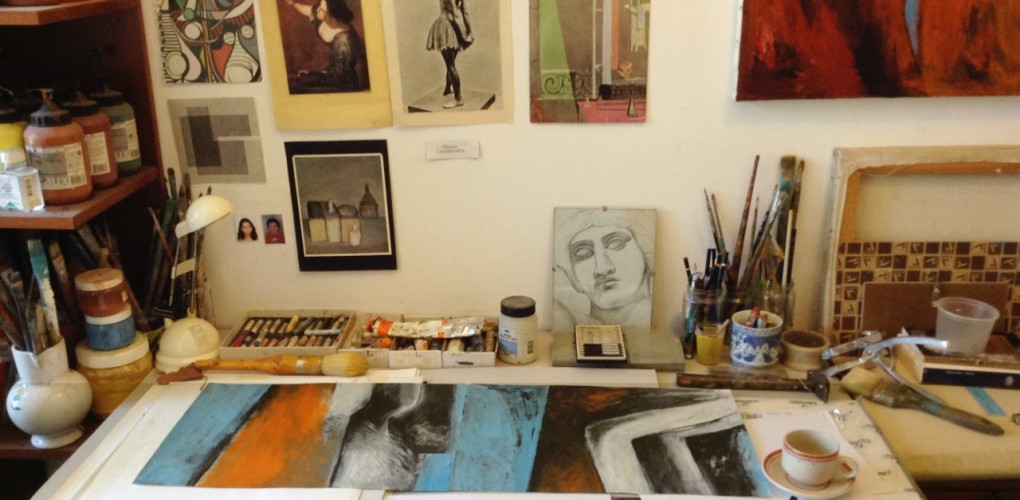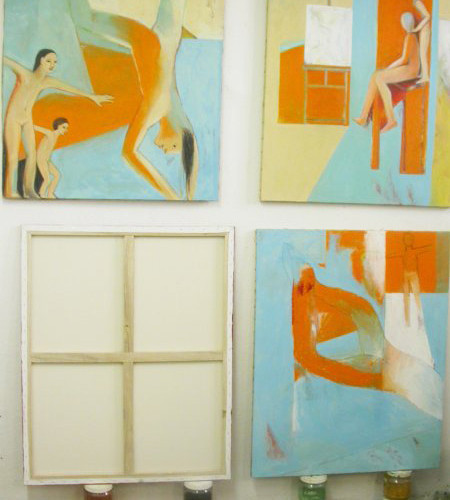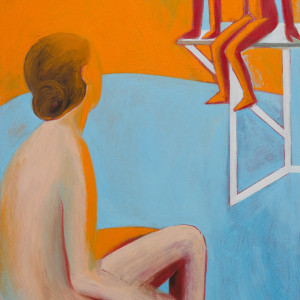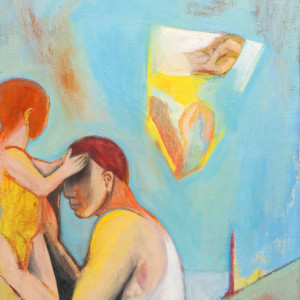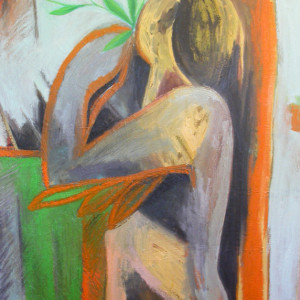Inside the Studio
 Rosaria Onotri
Rosaria Onotri
What are the major themes you pursue in your work?
I don’t really have a specific theme. When something comes up, it usually evolves over time. What will remain in the artwork is simply a first impression. My starting point when I approach painting is a–be it a line, or a wish to embody something in color. Oftentimes, it is a wish to combine two elements together in order to create something new.
So, I cram my canvas with shapes and representations of objects–then I start erasing. It is an exhausting process of destruction. I erase to the point where only traces of interest remain, that is, signs that still hold autonomy. It is then a starting point from which images stand for themselves; unexpected forms spring forth, stripped down figures arise as pictorial facts. I’d say that my work consists in destructing my own preconceived ideas. One thing that is for certain is that the human figure always imposes itself in my artwork. The representation of the human body is a perpetual question for me, as is the supposition of typical elements in dreams, and the sobriety of lines.
What was the best advice given to you as an artist?
Unfortunately I never take heed of advice. That will be my “enfant sauvage” side.
Prefer to work with music or in silence?
When I’m working, I like listening to music, but at times I do need silence.
Who are your favorite writers?
I really love Dostoevsky.
If you could only have one piece of art in your life, what would it be?
Many are the paintings that are sources of inspiration, but I don’t necessarily feel that I have to own them; the possibility of being able to stare at them at length though is rather enticing. Some paintings that have marked my memory forever include Willem de Kooning’s “Pink Angels,” Simone Martini’s “The Carrying of the Cross,” “Three Studies for Figures at the Base of Crucifixion” by Francis Bacon, and “Judith Beheading Holofernes” by Artemisia Gentileschi.

